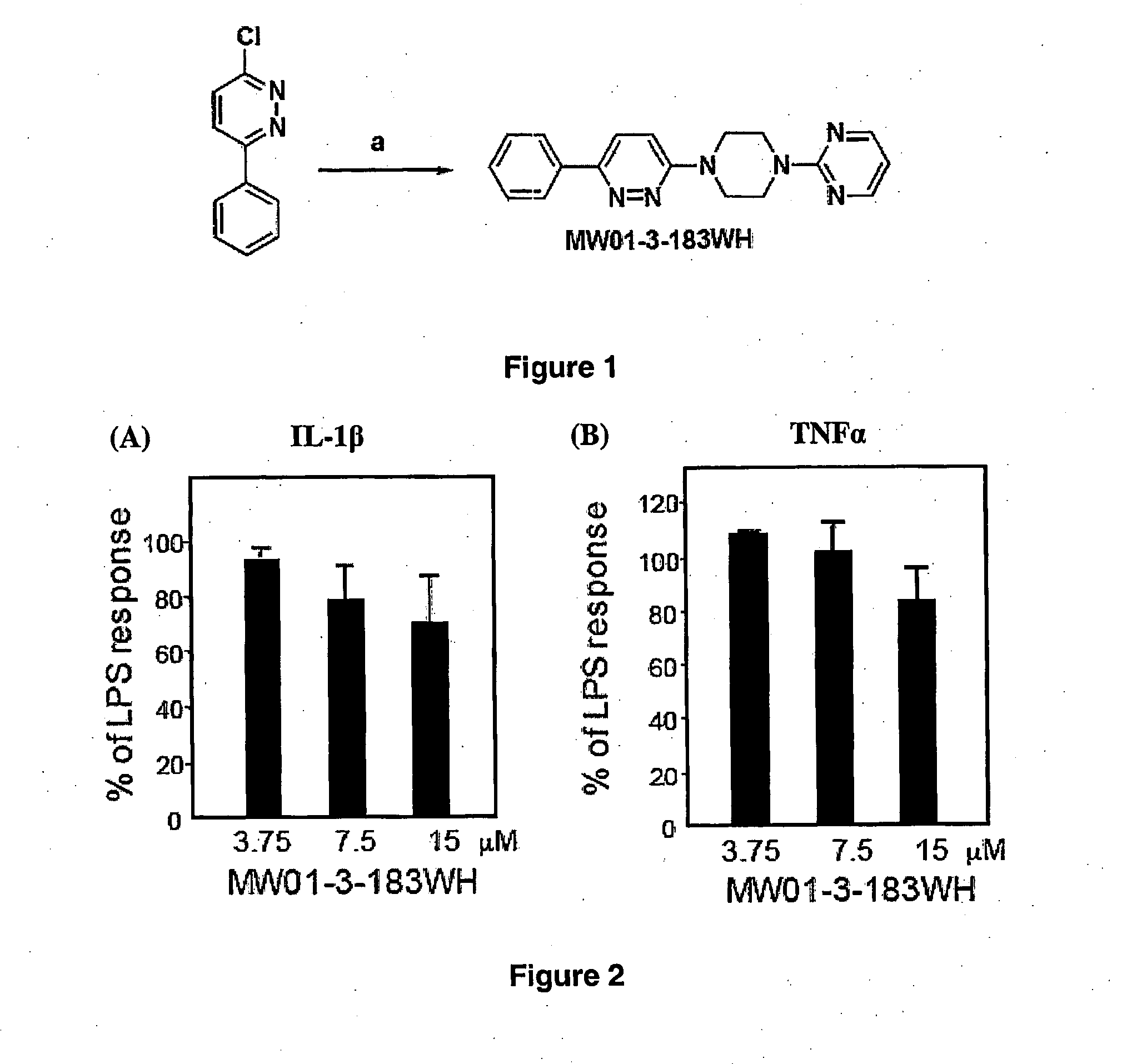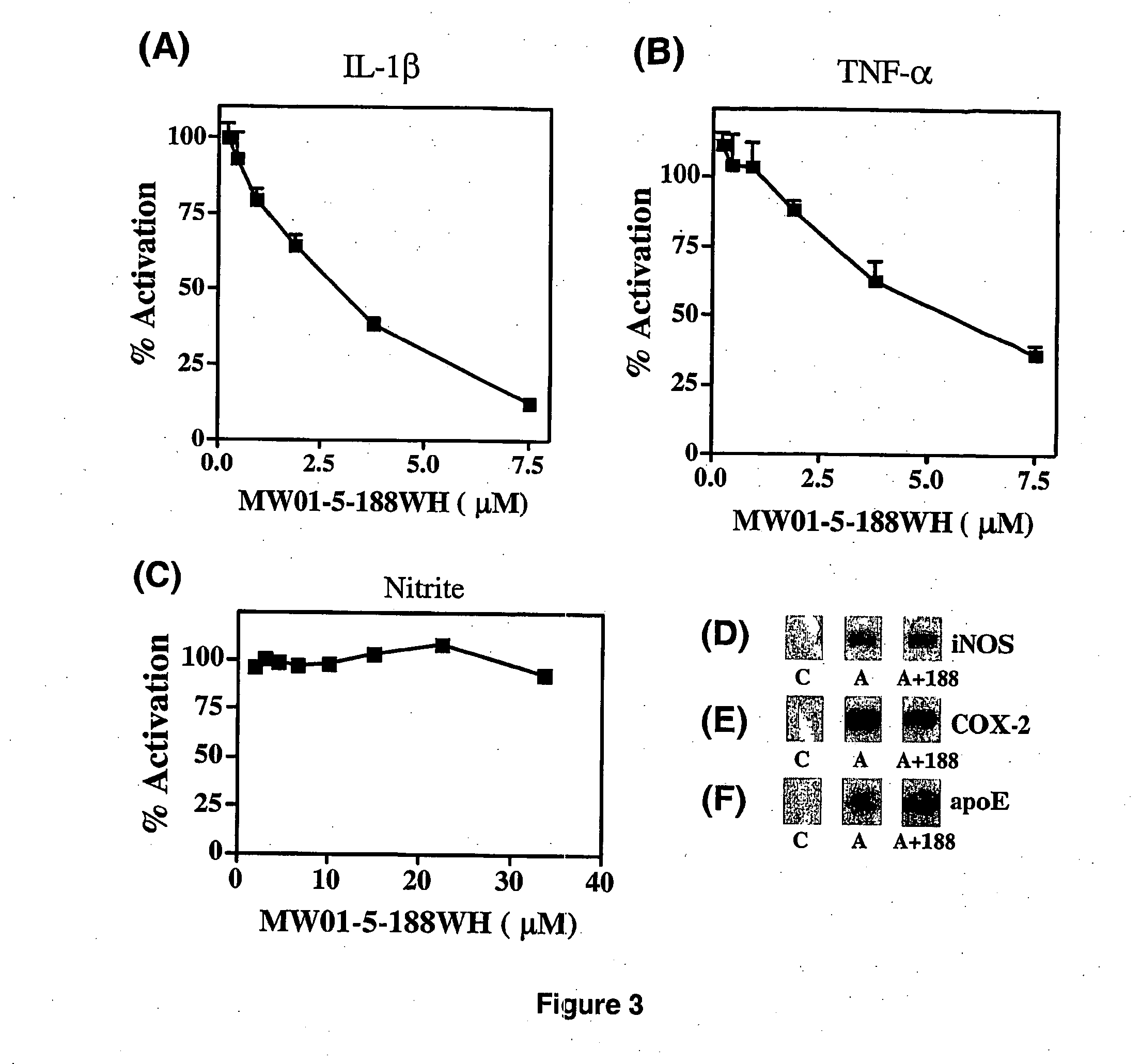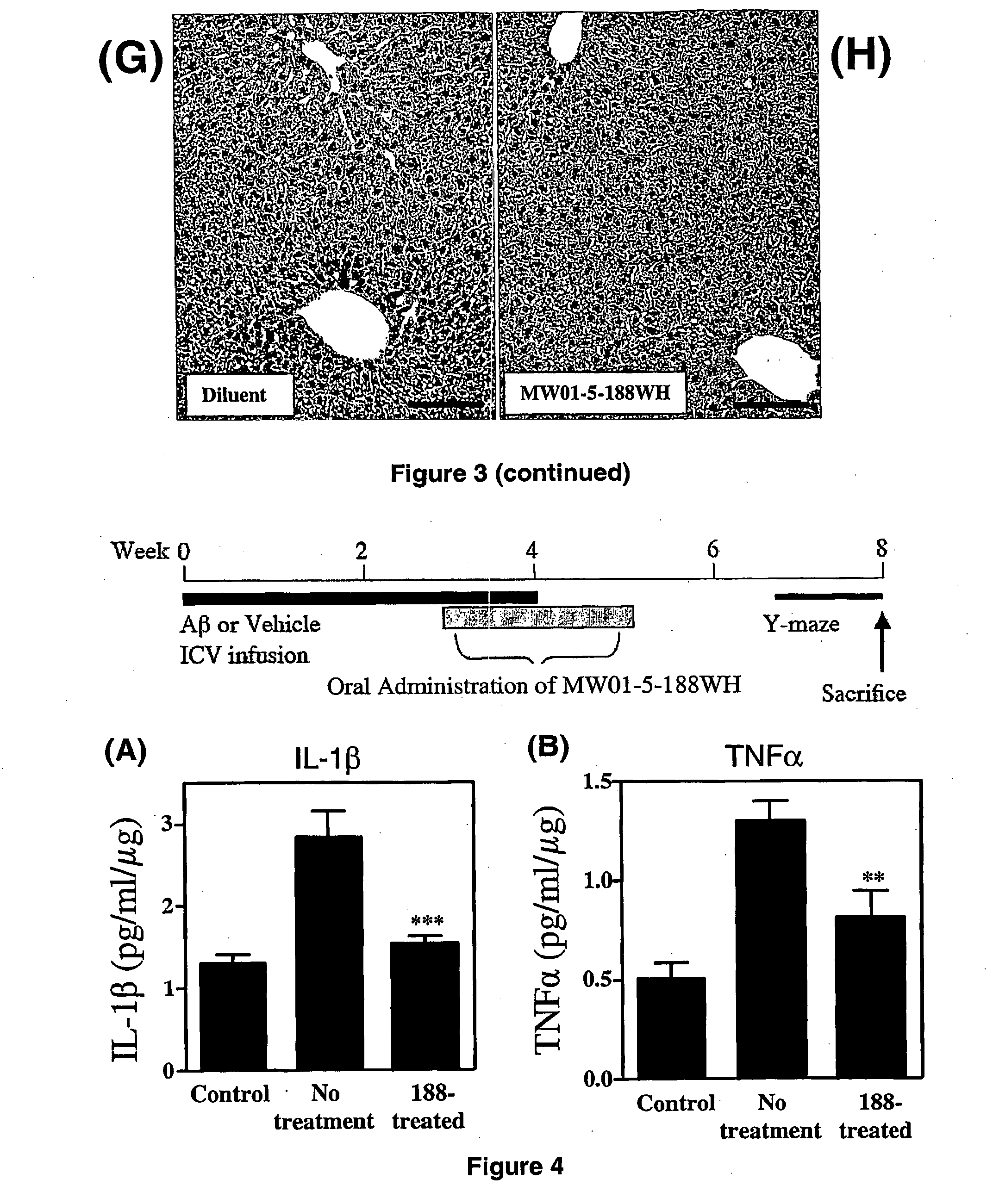Pyridazine compounds, compositions and methods
a technology of pyridazine and compounds, applied in the field of chemical compounds, can solve the problems of increased levels, decreased production of trophic molecules that mediate cell survival and other beneficial cellular processes, increased levels, etc., and achieves the effects of reducing or inhibiting kinase activity, and increasing survival of subjects
- Summary
- Abstract
- Description
- Claims
- Application Information
AI Technical Summary
Benefits of technology
Problems solved by technology
Method used
Image
Examples
example 1
General Materials and Methods
[0376]Synthetic Chemistry. All reagents and solvents were used as purchased without further purification. Syntheses were done using variations of established methods and in-parallel synthetic schemes.
[0377]Briefly, diversification of position 3 of the pyridazine ring was done by reaction of a common halogenated pyridazine precursor. For the compounds used in this report, a mixture of 0.01 mol of substituted chloropyridazine, 0.05 mol of substituted piperazine and 0.01 mol of ammonium hydrochloride in 30 mL of 1-BuOH was stirred at 130° C. for 48 h. The solvent was removed under reduced pressure. The residue was then extracted with ethyl acetate, washed with water and brine, and dried over anhydrous NaiSO-i. Removal of solvent was followed by recrystallization from 95% ethanol.
[0378]Amination of 3-chloro-6-phenylpyridazine by 2-(piperazin-1-yl)pyrimidine (FIG. 12) easily led to 2-(4-(6-phenylpyridazin-3-yl)piperaziin-1-yl)pyrimidine (MW01-3-183WH): Light ...
example 2
Acute and Chronic Toxicity Assays
[0387]Liver toxicity is an especially important initial consideration for orally administered compounds, as the liver is the major site of initial drug metabolism and is critical to overall metabolism and homeostasis of an animal. Liver injury is also a component of idiopathic tissue injury seen in certain chronically administered drugs. Therefore, it is important to do initial assessments of liver toxicity after oral administration of compounds to mice.
Methods:
[0388]A standard approach is to test compounds in two initial in vivo toxicity assays: an acute, escalating-dose paradigm and a chronic, therapeutic dose regimen. For the escalating-dose, acute toxicity assays, mice (5 per experimental group) are administered either compound or vehicle in 0.5% carboxymethylcellulose (alternatively, castor oil or sesame oil can be used) by oral gavage once daily for 3 days. Standard compound doses are 3.1, 12.5, and 50 mg / kg; the highest dose is 20× a therapeut...
example 3
hERG Channel inhibition Assays and Cardiac QT Interval Assays
[0393]Compounds have been screened for hERG (human ether-a-go-go) potassium ion channel binding and inhibition in order to eliminate early in the process any compounds with high potential to induce prolongation of cardiac QT interval in later studies due to off-target toxicities. The hERG channel conducts rapidly activating delayed rectifier potassium currents that critically contribute to cardiac repolarization. Mutations in the hERG channel gene and drug-induced blockade of the currents have been linked to delayed repolarization of action potentials resulting in prolonged QT interval (Finlayson et al., 2004; Recanatini et al., 2005; Roden, 2004). QT prolongation is considered a significant risk factor against cardiac safety of new drugs. Therefore, consideration of cardiac safety early in the development process by testing for hERG channel inhibition provides an efficient and predictive means to assess potential compound...
PUM
| Property | Measurement | Unit |
|---|---|---|
| wavelengths | aaaaa | aaaaa |
| wavelengths | aaaaa | aaaaa |
| wavelengths | aaaaa | aaaaa |
Abstract
Description
Claims
Application Information
 Login to View More
Login to View More - R&D
- Intellectual Property
- Life Sciences
- Materials
- Tech Scout
- Unparalleled Data Quality
- Higher Quality Content
- 60% Fewer Hallucinations
Browse by: Latest US Patents, China's latest patents, Technical Efficacy Thesaurus, Application Domain, Technology Topic, Popular Technical Reports.
© 2025 PatSnap. All rights reserved.Legal|Privacy policy|Modern Slavery Act Transparency Statement|Sitemap|About US| Contact US: help@patsnap.com



